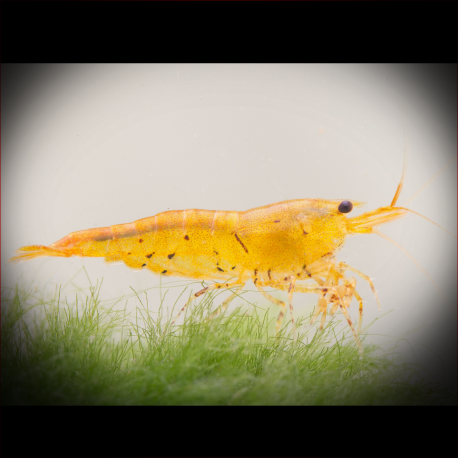More info
Datasheet
| Maximum Size | 45cm / 17.72inches |
| Temperament | Peaceful |
| Care Description | Moderate - Difficult |
| Temperature | 21.1°C / 69.98°F - 25.6°C / 78.08°F |
| Carbonate Hardness | 3-10 |
| pH | 6.0-7.0 |
General Description
Highly ornamental and prized by aquarists for their striking appearance, the Black Pinto Shrimp (Caridina serrata) are known for their unique markings and patterns. Displaying a black coloration with white spots on the head and thorax and striping or large blocks of white on the abdomen and tail, each shrimp is a distinct specimen.
Aquarium Setup
Black Pinto Shrimp thrive in established freshwater aquariums with good filtration, high water quality, and peaceful tank mates. They do well in planted tanks with abundant food and shelter. Recommended aquarium sizes are at least 3 gallons for single shrimp and a minimum of 10 gallons for a colony or breeding tank. Avoid copper-based medications in tanks containing these sensitive invertebrates and refrain from housing them with larger carnivorous species, such as loaches or puffers.
Behavior
Peaceful in temperament, Black Pinto Shrimp are active algae eaters and contribute to the cleanliness of the aquarium. They are best kept with non-aggressive tank mates to ensure their well-being.
Feeding and Diet
As omnivores, Black Pinto Shrimp consume algae, detritus, and leftover food in the aquarium. Supplement their diet with quality flake food or pellets if natural food sources are insufficient.
Reproduction & Dimorphism
In suitable conditions, male and female Black Pinto Shrimp are likely to breed. Females carry yellowish eggs under their tails until hatching, which occurs approximately 30 days later. The newborn shrimp resemble miniature adults and require the same diet. To protect the young from being consumed by tank mates, consider housing them in a separate breeder tank with a sponge filter.
Habitat and Distribution
Black Pinto Shrimp belong to the Atyidae family and are native to freshwater habitats. They thrive in water conditions with a pH range of 6.0-7.0, a temperature between 21.1-25.6°C, and a hardness of 3-10 dKH. This species can be found distributed in various regions where freshwater environments support their survival.

